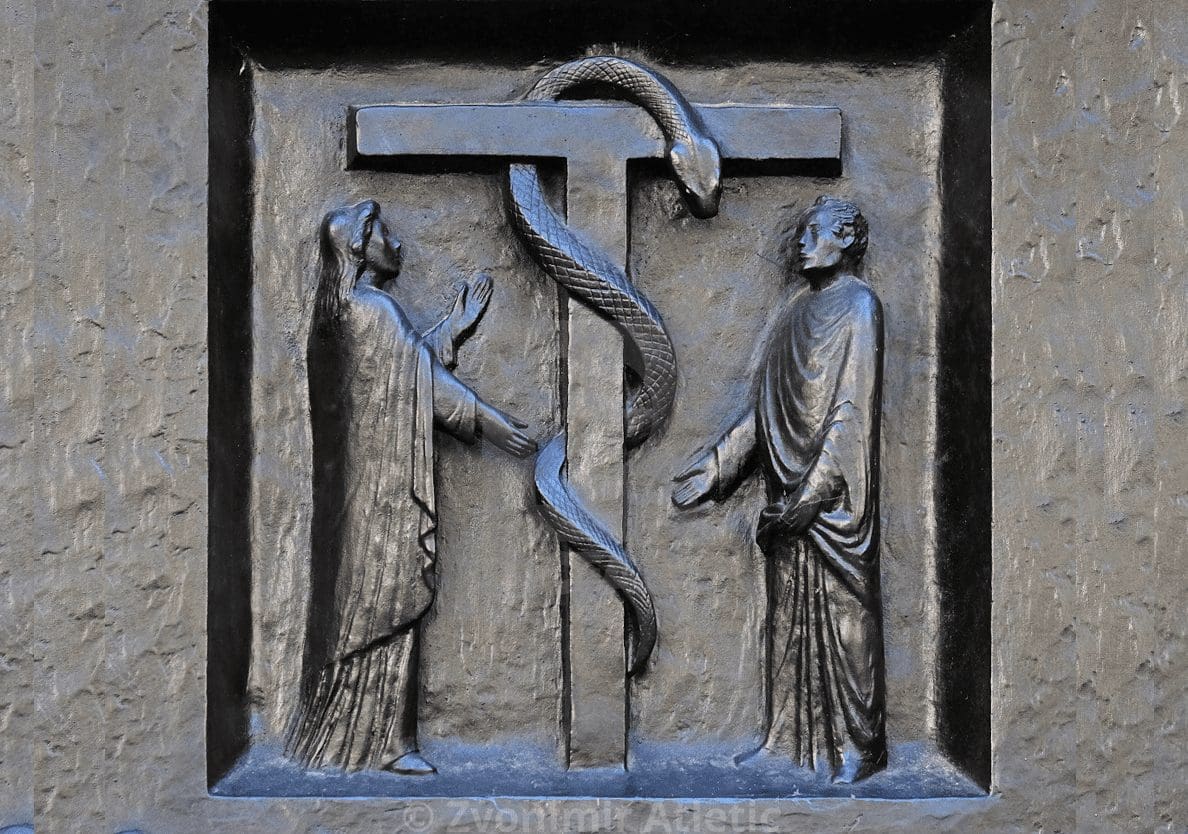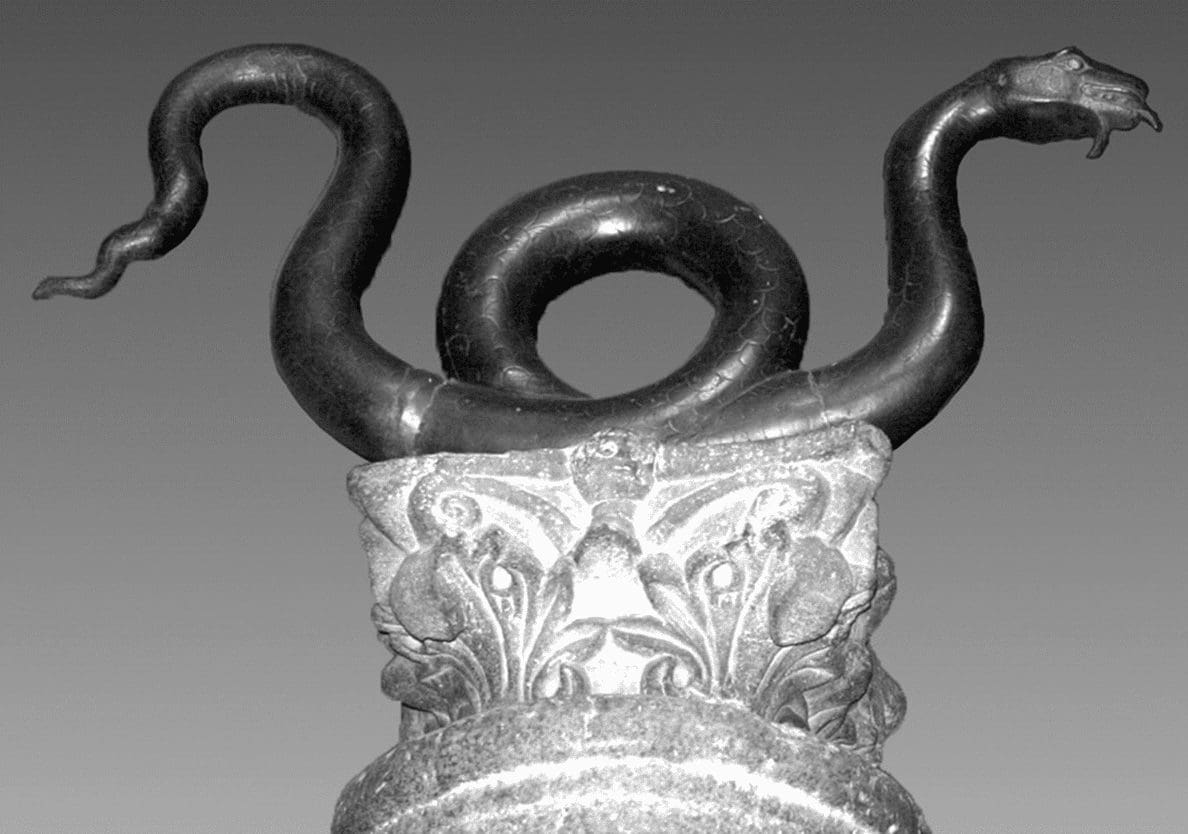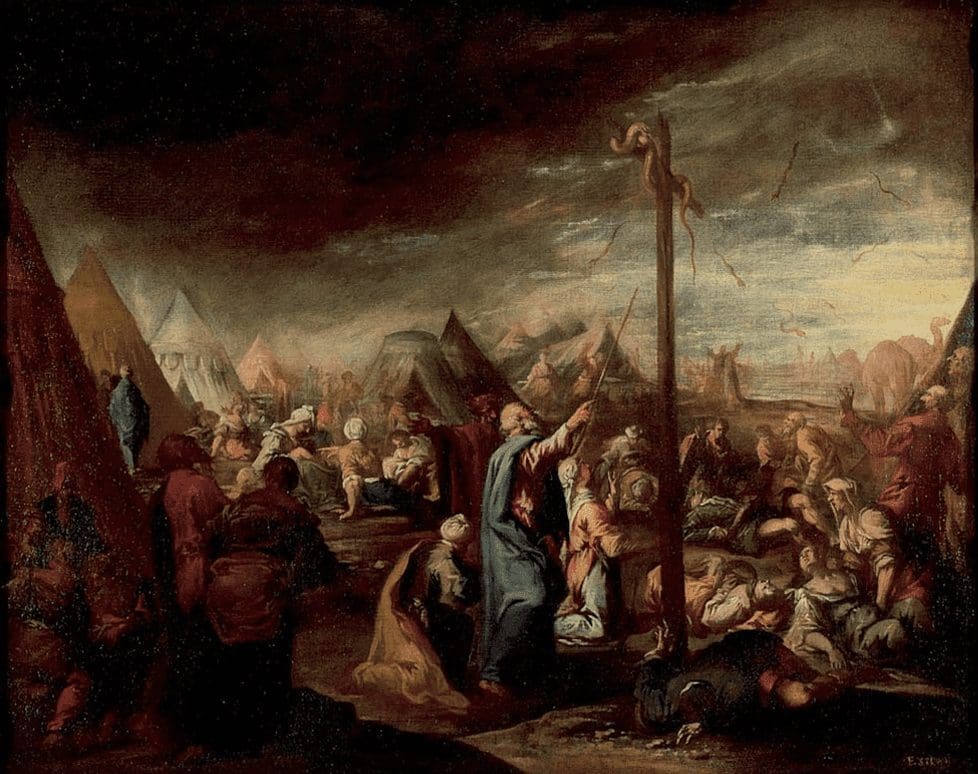In the time of the priest and prophet Samuel, Israel went to war with her mortal enemy, the Philistines, and suffered a horrible defeat. The Israelites, bewildered, said, “Why has the Lord defeated us today before the Philistines? Let us bring the ark of the covenant of the Lord from Shiloh to us, that when it comes among us it may save us from the hand of our enemies.” (1 Samuel 4:3)
Although this plan at first seemed to backfire, since the Philistines ended up capturing the ark, it ultimately did bring upon the Philistines “a very great destruction” as the Lord’s hand was “heavy” against them. In fact, the Lord brought upon them a plague of tumours and rats so terrible that after only seven months they ended up sending the ark back to Israel with a chest containing an offering of five golden tumours and five golden rats in hopes that they would be healed from this dreadful plague. The Philistines made images of the very thing that caused the plagues just like the Israelites who fashioned a bronze serpent to heal them from its venomous bites.
“Of course, such idols, relics and images are utterly powerless. For there is only one God—and only He has the power to heal our sicknesses.”
Interestingly, this ‘image healing’ method like these golden replicas were likely “talismanic figures made according to some occult laws of astrology.”[1] Such talismans were very ancient and were supposed to cure diseases and to ward of evils. It has even been suggested that “they originated in false views entertained by the Gentiles concerning the brazen serpent”[2]. The idea is that the Gentile astrologers had learned about the Israelites’ encounter with the snakes and their subsequent healing by way of looking upon the bronze serpent and concluded that “all sorts of evils might be remedied, provided corresponding images were made under proper astrological conditions. Whether this theory be correct or not, there is abundant evidence of the ancient prevalence of this superstition. It still exists in India. Talismans, generally of silver, are carried to the heathen temples. These images represent as nearly as may be the diseases or special troubles under which the offerers suffer. It is supposed that the gods will be propitious (favourable) on seeing them and give the sufferer the relief sought.”[3]


Of course, such idols, relics, talismans, and images are utterly powerless. For there is only one God—the God of Abraham, the God of Isaac, and the God of Israel—and only He has the power to heal our sicknesses. Unfortunately, the “stiff-necked” Israelites later went the way of the Gentiles and eventually began to worship the brazen serpent as an idol. Fortunately, the godly king Hezekiah had the image destroyed as a part of his reforms. We too, like Hezekiah, must recognize that only with God lies all authority and power.

Ryan Hembree is a daily co-host, speaker, and writer of Bible Discovery. He also hosts a YouTube channel that shows the unity of the Bible and how science and Scripture fit together. Ryan also has an honorary Masters of Ministry in Creation Science from Phoenix University of Theology.







Permalink